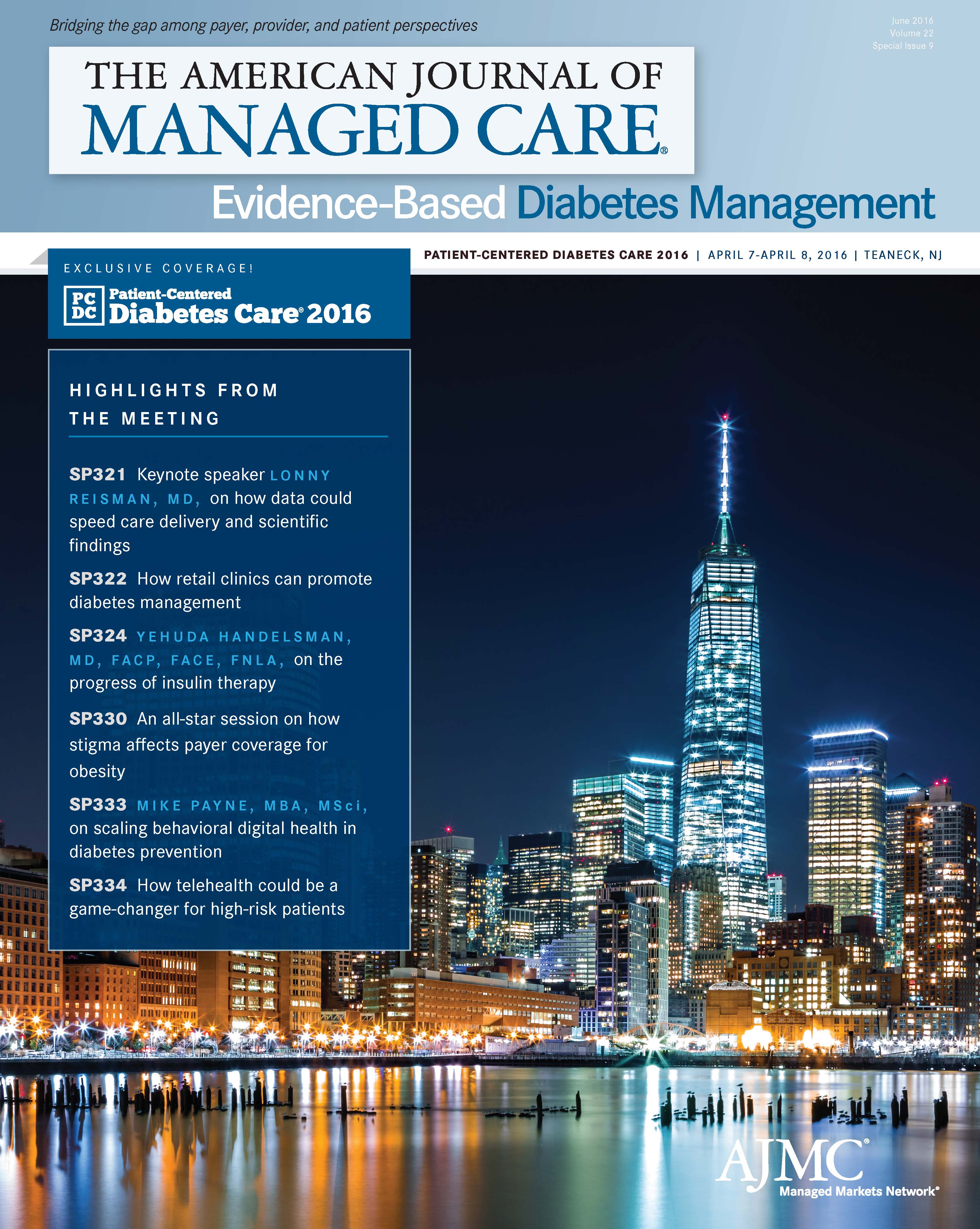- Center on Health Equity and Access
- Clinical
- Health Care Cost
- Health Care Delivery
- Insurance
- Policy
- Technology
- Value-Based Care
Physician, Employer Attitudes Must Change Alongside Better Obesity Coverage, Panel Says
Coverage from Patient-Centered Diabetes Care, April 7-8, 2016. Presented by The American Journal of Managed Care and Joslin Diabetes Center.
Small gains in improving payer coverage for obesity care are worth noting, but the US healthcare system remains well behind where it should be in treating the 93 million people with the disease, according to experts who took part in the discussion, “Overcoming Barriers to Access,” during the April 8, 2016, session of Patient- Centered Diabetes Care (PCDC).
The 2016 meeting marked the first time that PCDC, presented by The American Journal of Managed Care and Joslin Diabetes Center, devoted an entire session to issues with obesity care and coverage, and just having the discussion was noteworthy to Fatima Cody Stanford, MD, MPH, MPA, FTOS, of Massachusetts General Hospital, who offered the provider voice on the panel.
As obesity specialists learn more about the physiology and the neuroscience behind the disease, the next step is better training of physicians— whose judgments can set back patients. “Whether or not young physicians that are coming out of training are familiar with dealing with patients with obesity, they may not necessarily know how to adequately address the issue, but at least they’re recognizing it as an issue for the first time,” she said.
Joining Stanford were obesity care advocate Ted Kyle, RPh, MBA, of ConscienHealth, and Anne Schmidt, MD, associate medical director for Blue Cross Blue Shield (BCBS) of Alabama, representing the payer voice. Meeting chairman Robert A. Gabbay, MD, PhD, FACP, CMO of Joslin Diabetes Center, moderated the discussion.
Payer coverage for obesity pharmaceuticals has not been uniform or robust. Stanford and Kyle have noted that despite the movement toward increased cost-sharing by employers for staff who fail to meet certain health targets, some of these same employers will not pay for obesity therapy. While there has been some improvement, “Unfortunately, we still are quite far behind, and I don’t think we can pat ourselves on the back just yet,” Stanford said.
Children with obesity, in particular, have limited options; typically, payers will only cover counseling or surgery, she said. Schmidt said that the transition from fee-for-service to a value-based system will help promote coverage for obesity care, because it will make sense to pay for services with proven outcomes. Evidence from clinical trials is important, Schmidt said, because a key challenge is convincing major employers with self-funded plans that obesity care is worth it.
In Alabama, she said, BCBS is initiating a process measure, asking physicians to record the body mass index (BMI) for all adults. Since Kyle pointed out that only 74% of doctors do this nationally, this change by Alabama’s largest payer— in a state with high obesity rates—could open many discussions about making changes. The challenge here is getting employers with selffunded plans to buy into a value-based concept that promotes payment for evidence-based therapy, Schmidt added.
As Gabbay said during the discussion, no one would deny treatment to a person with type 2 diabetes and say, “Now, go get those blood sugars lower.”
Stanford said that payer coverage is not the only challenge—the way physicians are trained must change, because the bias they carry about obesity does great harm. When a patient with severe obesity comes for a first visit, she said, “I have to have a box of Kleenex.”
A typical patient with a BMI of 40 or higher will have tried multiple diets, including fad programs seen on TV, she said, but “they cry because the doctor told them they just didn’t try hard enough.”
“If one adds up all the money spent on things that don’t work,” Gabbay said, “We’d probably have money for the things that do work.”


